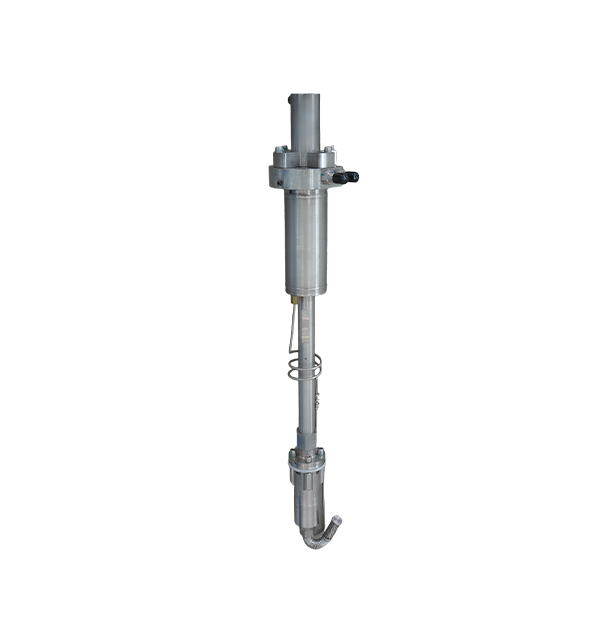A Brief Discussion on the Performance Advantages of Cryogenic Pumps
I. Exceptional Low-Temperature Adaptability
Material Science Innovation
Cryogenic-Resistant Alloys: Pump casings and impellers use 304L/316L stainless steel (impact toughness ≥100J at -196°C) or aluminum bronze (CuAl10Ni) to prevent brittle fracture in liquefied gas environments (e.g., liquid nitrogen, LNG).
Thermal Insulation Structures: Adopt double-wall casings with vacuum-jacketed layers (thermal conductivity ≤0.005W/(m·K)) and multilayered insulation (MLI) to reduce heat ingress by 90% compared to single-wall designs.

Sealing System Optimization
Cryogenic Seals: Use PTFE-impregnated graphite packing or bellows seals (leakage rate ≤1×10⁻⁹ mbar·L/s) to withstand thermal contraction (linear shrinkage ~0.3% at -162°C).
Vapor Barrier Design: Install a nitrogen purge chamber between primary and secondary seals to prevent cold-induced condensation, maintaining sealing reliability at -269°C (liquid helium service).
II. High Efficiency and Energy Savings
Hydrodynamic Design for Low Viscosity
Narrow-Blade Impellers: Employ backward-curved impellers with a blade angle of 25–30° to optimize flow in low-viscosity media (e.g., liquid hydrogen, viscosity 0.012cP), achieving an efficiency of 78–85% (3–5% higher than standard pumps).
Inducer Integration: Install a conical inducer (L/D ratio ≥3) at the impeller inlet to suppress cavitation, enabling a net positive suction head required (NPSHR) of ≤1.5m for LNG pumps.
Energy-Saving Operation Modes
Variable Speed Control: Use magnetic bearing motors (rotational speed 10,000–30,000rpm) with frequency conversion, reducing power consumption by 30% during partial loads (e.g., 50% flow operation).
Regenerative Turbine Design: Recover 15–20% of discharge energy through a regenerative turbine, offsetting pump power needs in LNG regasification systems.
III. Safety and Reliability Features
Explosion-Proof and Leakage Prevention
Hermetic Magnetic Drives: Adopt hermetically sealed magnetic couplings (torque transmission ≥500N·m) to eliminate shaft seals, achieving zero leakage (verified by helium mass spectrometer testing, leakage rate ≤1×10⁻¹⁰ Pa·m³/s).
Pressure Relief Systems: Equip with dual-stage relief valves (set at 1.2× and 1.5× working pressure) and burst discs for emergency venting in overpressure scenarios.
Long-Term Stable Operation
Bearing Life Expectancy: Use cryogenic-resistant ceramic bearings (Si3N4) with lubrication-free designs, achieving a mean time between failures (MTBF) of ≥80,000 hours (4–5 times that of conventional pumps).
Vibration Suppression: Implement active vibration control systems (acceleration ≤0.5g) and anti-vibration mounts to minimize wear on low-temperature pipelines.
IV. Compact Design and High Power Density
Integrated Structure Innovation
Vertical In-Line Configuration: Reduce floor space by 60% compared to horizontal pumps, with a height-to-diameter ratio of 2:1 for easy installation in LNG truck tanks.
Modular Construction: Adopt bolted split casings for quick maintenance, enabling impeller replacement within 4 hours (50% faster than welded structures).
High Head Capability
Multi-Stage Pump Design: Achieve heads of 500–1,000m in single pumps (e.g., 8-stage cryogenic pumps for liquid oxygen delivery), eliminating the need for series configurations.
